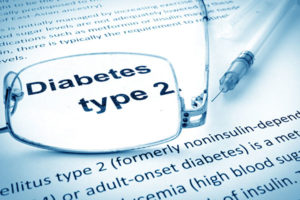
Type 2 diabetes, also known as non insulin dependent diabetes, is the most common type of diabetes. Type 2 usually appears in older people (over the age of 40) however, as levels of obesity in the UK are rising, more and more younger people are being diagnosed.
Type 2 happens either when the pancreas fails to produce enough insulin to properly control the levels of glucose in your blood, or when the body cannot use the insulin it produces properly.
The cause of diabetes is a mystery, although the following risk factors appear to play a role:
Symptoms are similar for both types of diabetes however type 2 diabetes can develop more slowly than type 1 diabetes.
Symptoms include:
Diabetes is often diagnosed by a doctor during routine urine or blood tests, when the test results show the presence of glucose. Normally, there should be no sugar in urine but when the levels of glucose in the blood rise above normal, glucose is spilled into the urine by the kidneys. This is why diabetes symptoms, such as excessive urination and genital itching, occur. If sugar is present in urine it is a good indicator of diabetes.
If an initial screening test shows glucose is present in urine, a blood test will typically follow to measure the actual amount of glucose in the blood.
If the level of glucose present is borderline, your doctor may want you to undergo further tests including a HbA1c test which looks at long term sugar levels.
You may also be advised to test your blood glucose levels to see how certain foods or activities affect your glucose levels. These tests can be done at home using any of the products below.
If these tests confirm that you have diabetes, you may be referred to a specialised diabetes clinic for specialist help and guidance.
Type 2 diabetes can often be controlled by eating a healthy diet, quitting smoking and getting regular exercise.
If lifestyle changes fail to improve your glucose levels, you may require medication.
Common medication includes metformin tablets, which are available under many different brand names. Metformin reduces the amount of glucose the liver produces and helps the body to respond normally to insulin. It can also improve the way your muscles utilise glucose.
Other medicines include:
If diet and tablets don’t prove to be effective in controlling your blood glucose levels, you may need insulin injections. Your doctor will assess and monitor the treatments to identify which is most suitable for you.
Diabetes can cause serious health complications if glucose levels become too high (hyperglycaemia) or too low (hypoglycaemia). Untreated diabetes, or diabetes that is not controlled properly, can also cause foot ulcers, vision problems, kidney failure, nerve damage, heart disease or stroke.
Read more about diabetes complications
You can prevent getting Type 2 diabetes through positive lifestyle choices.
Interested in learning more? Read these articles: